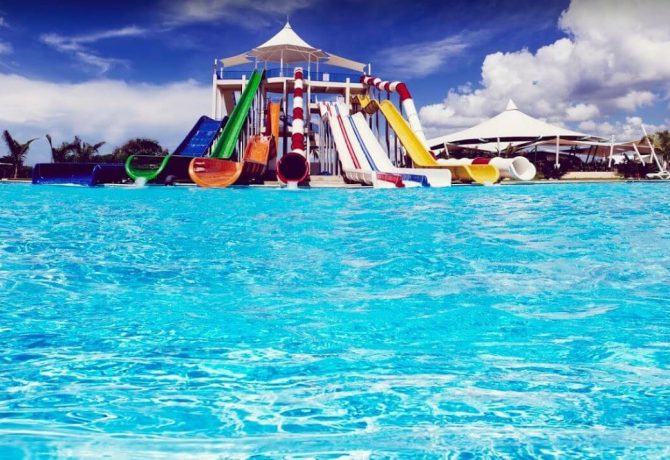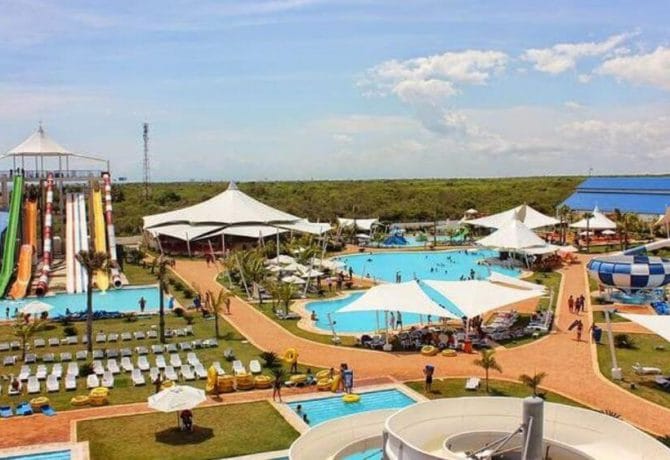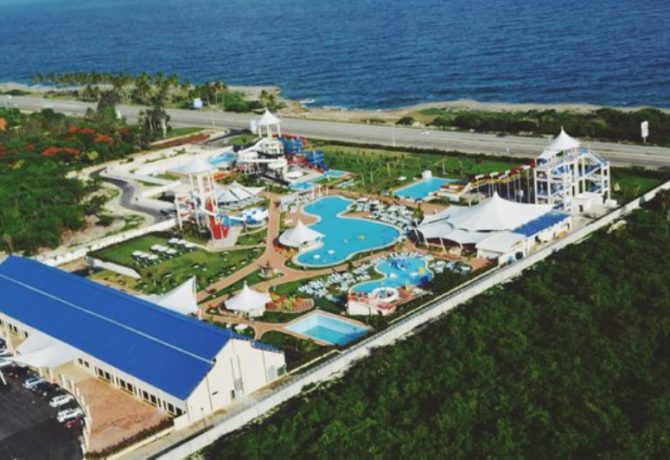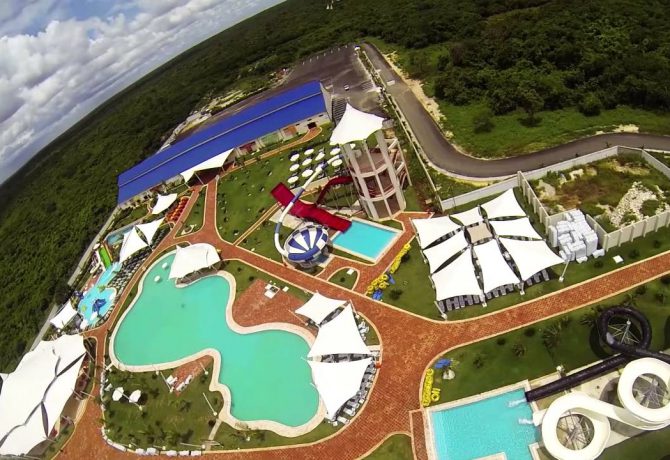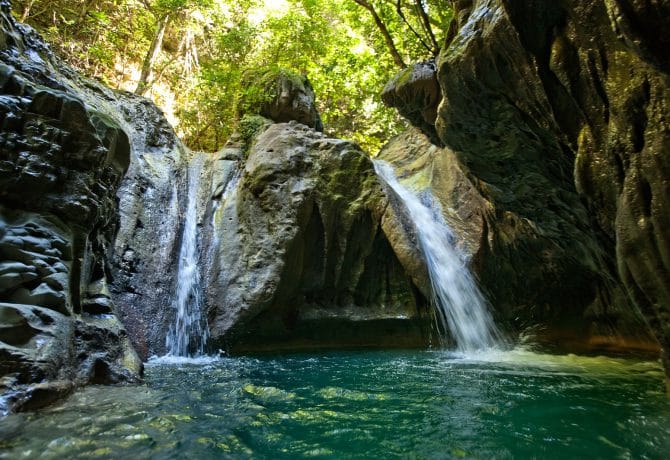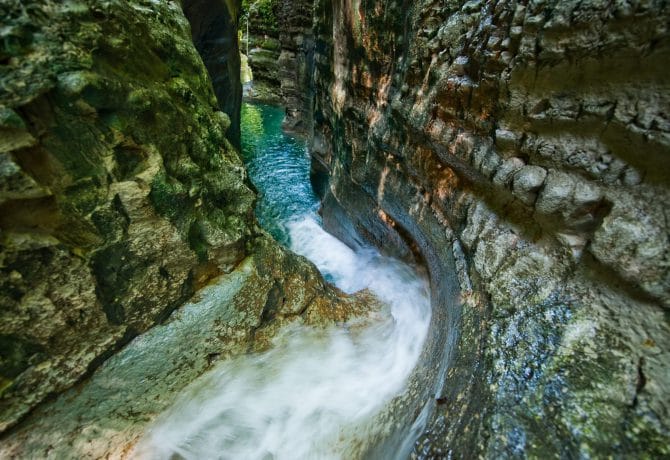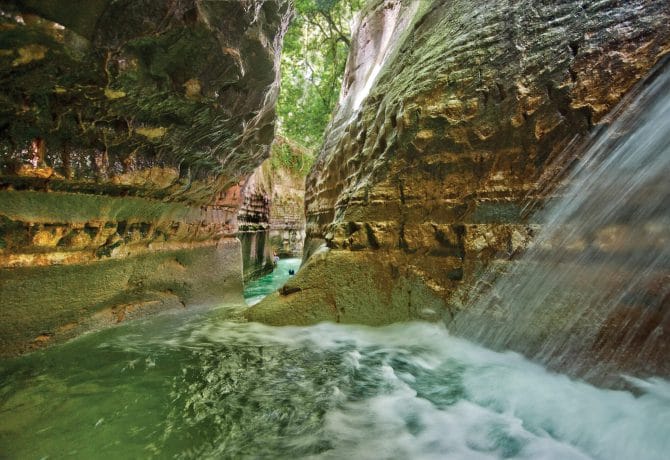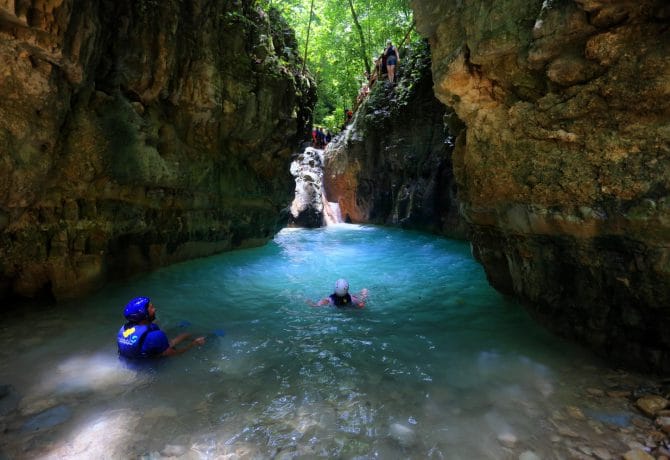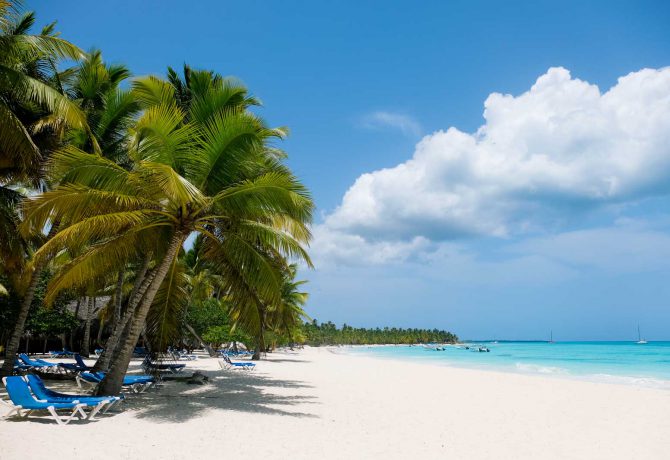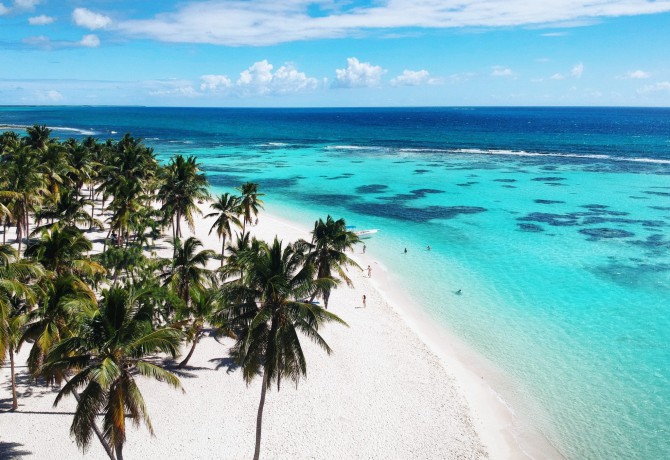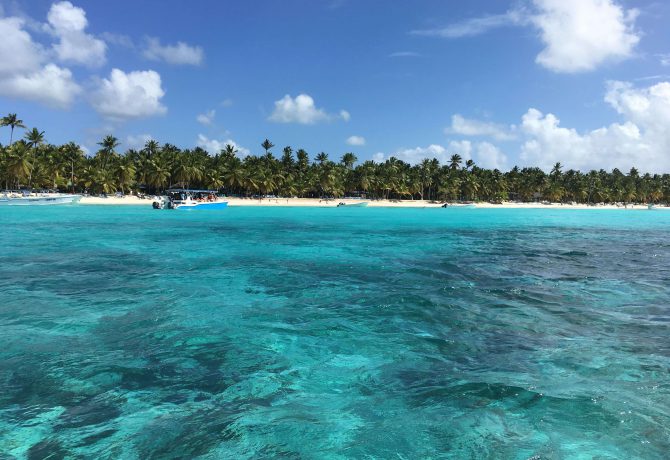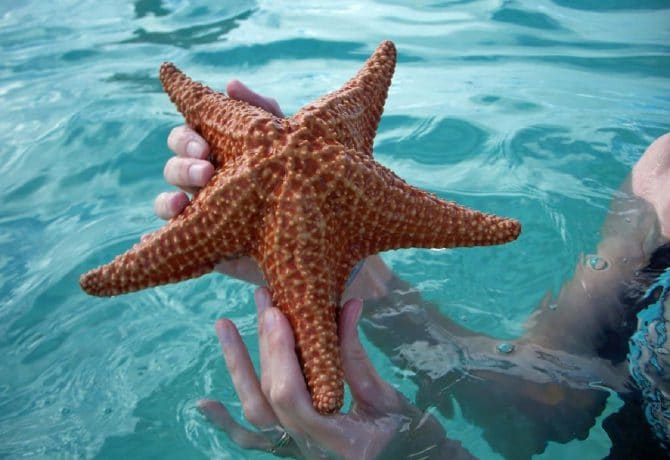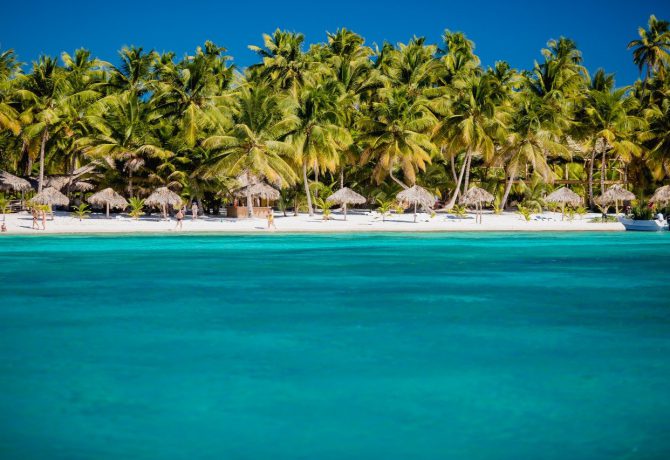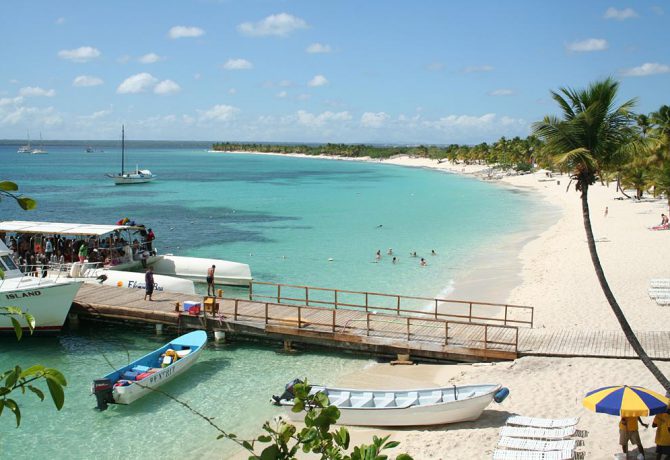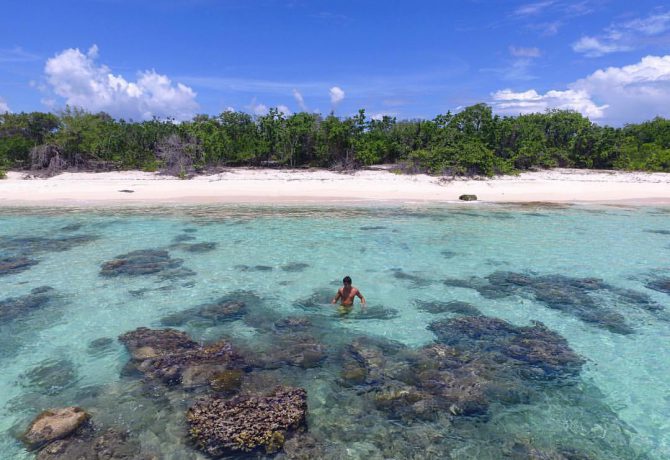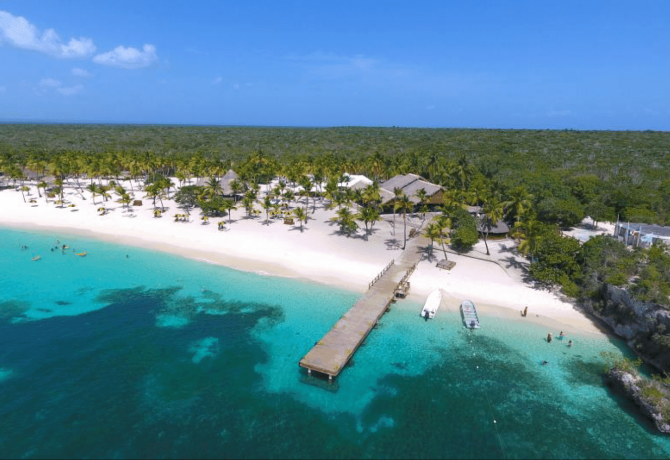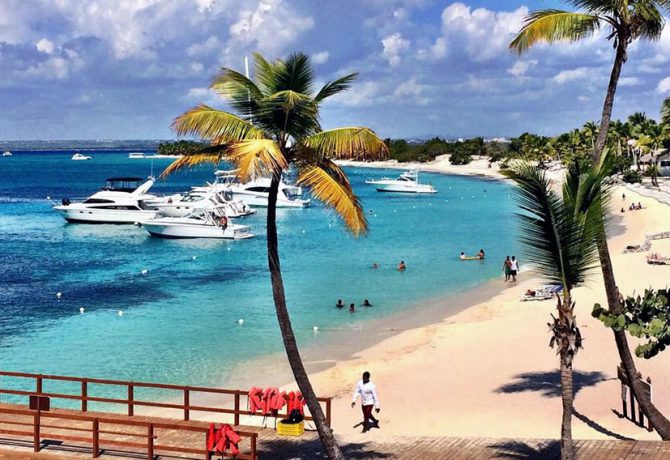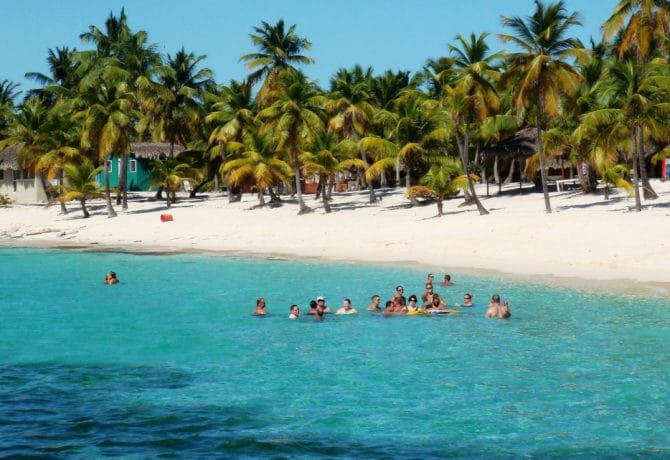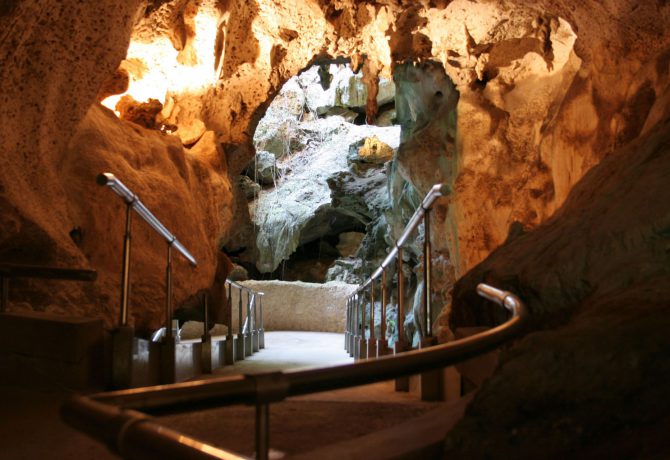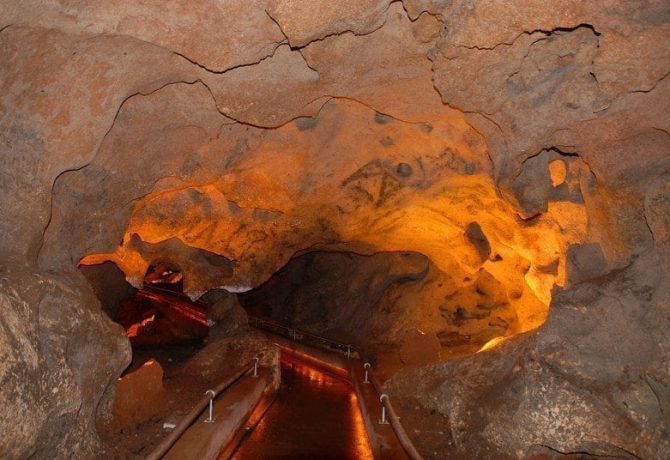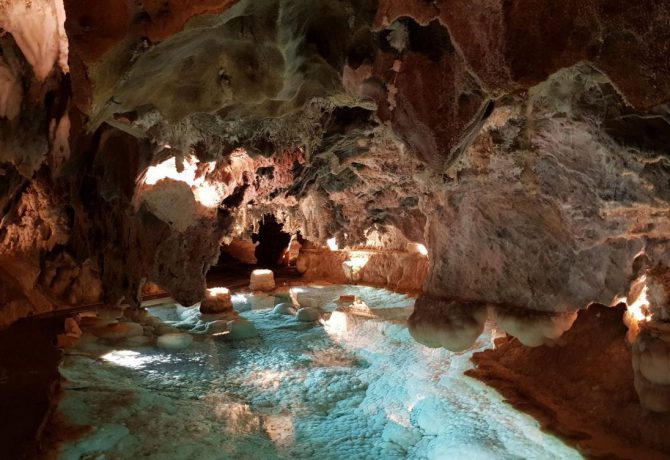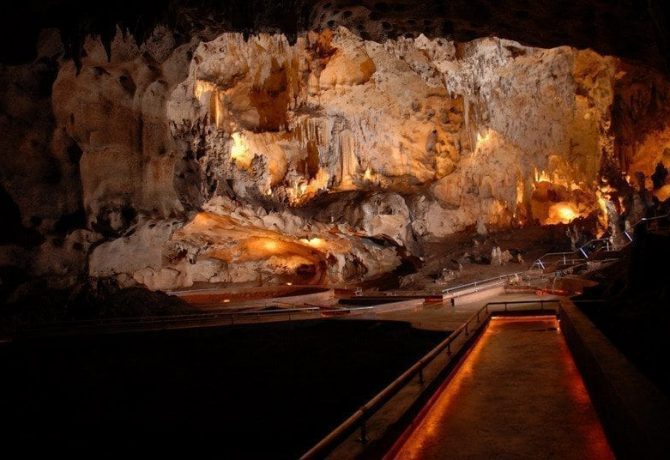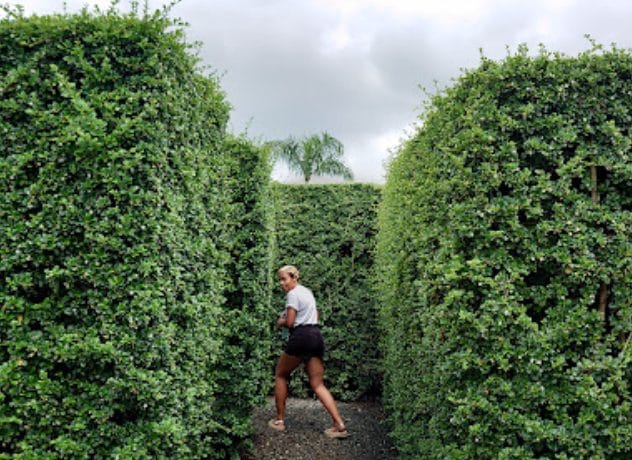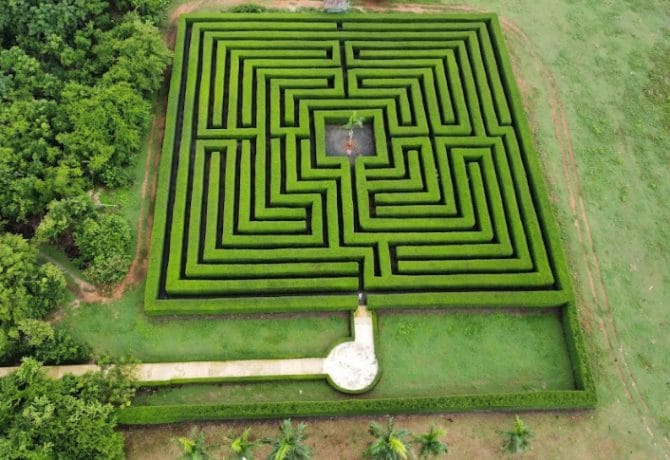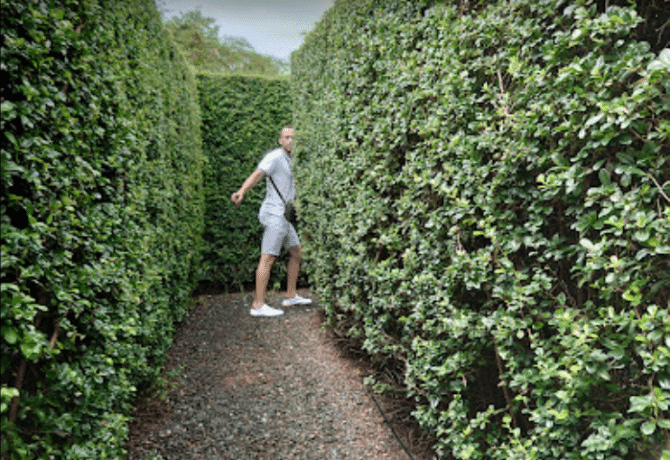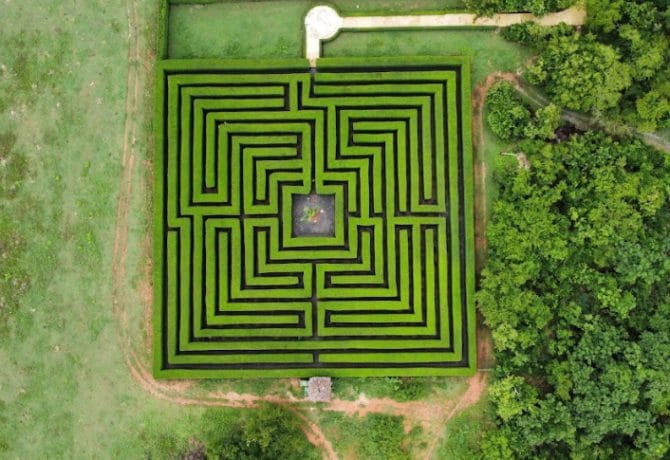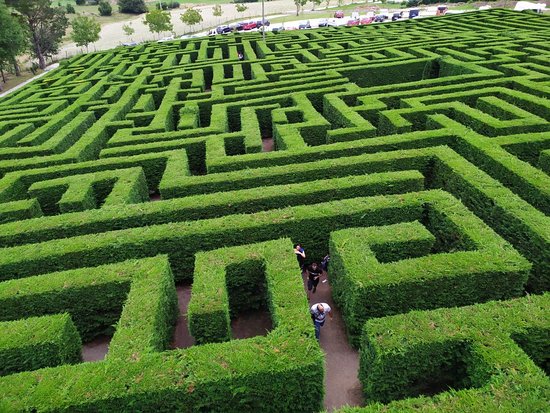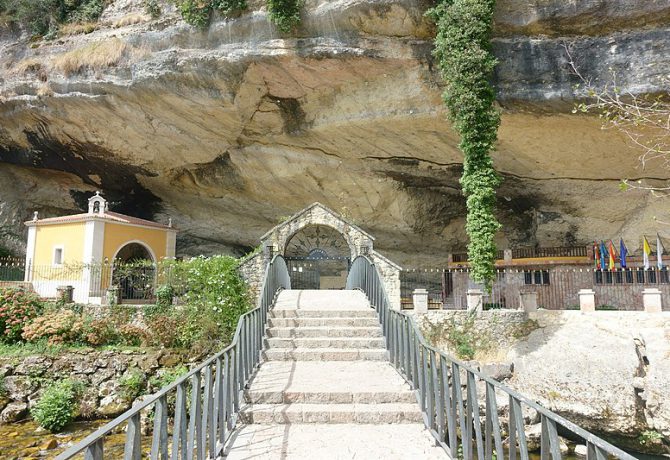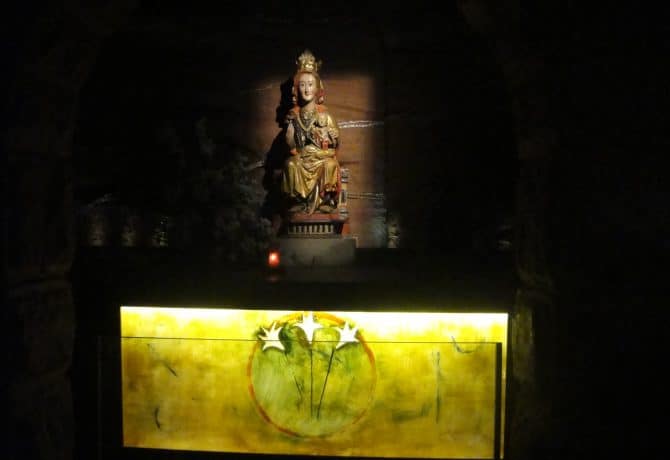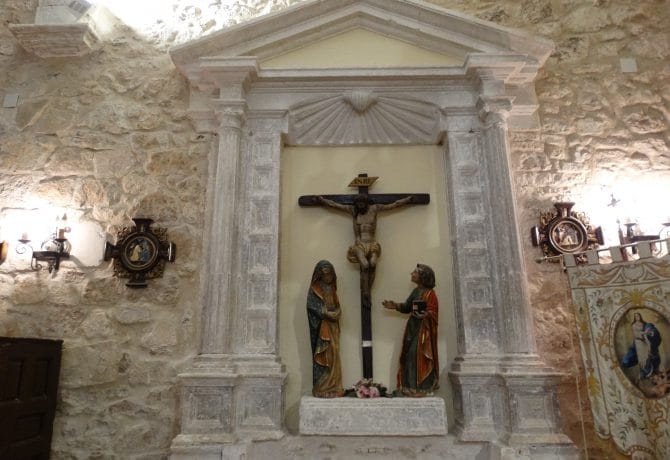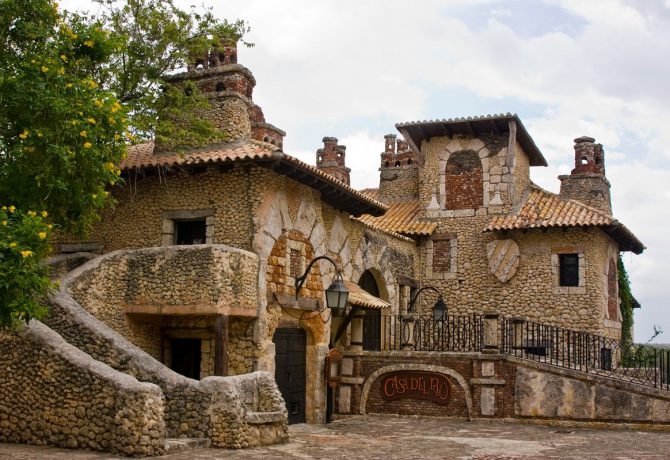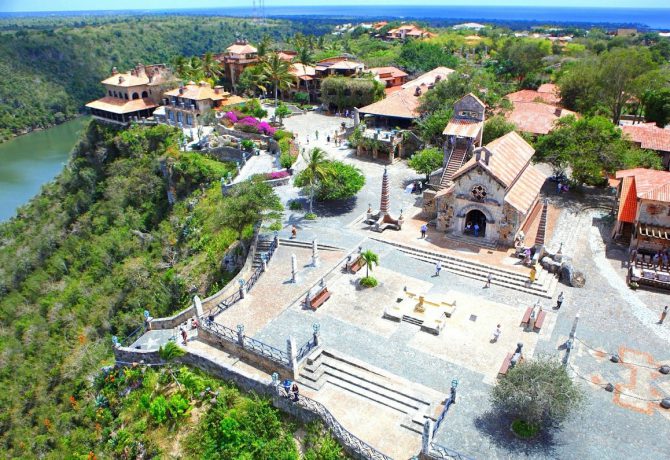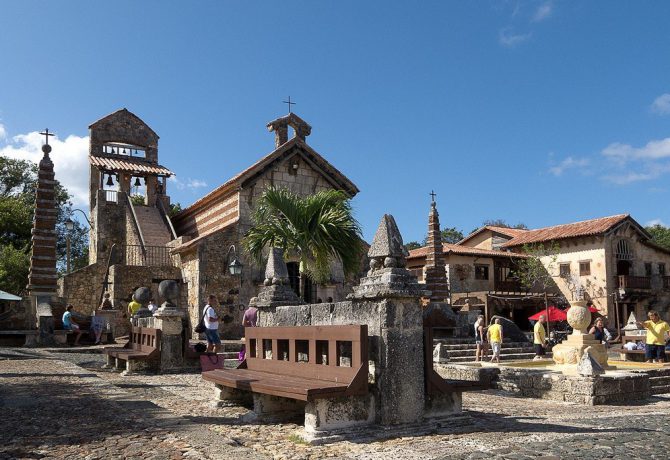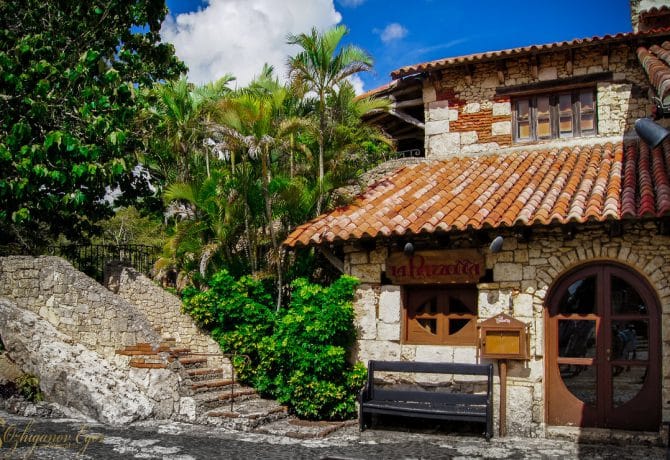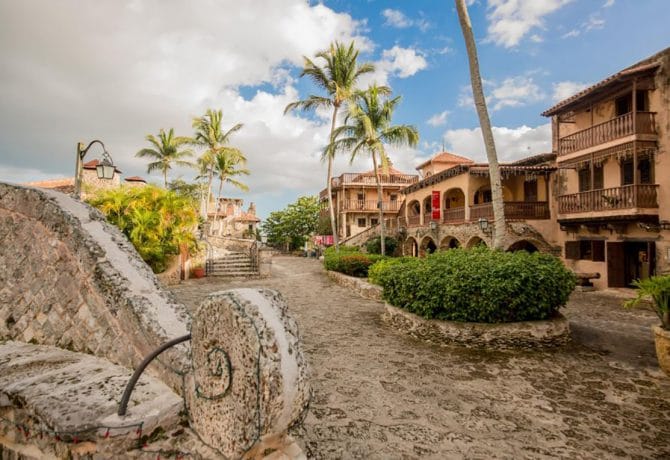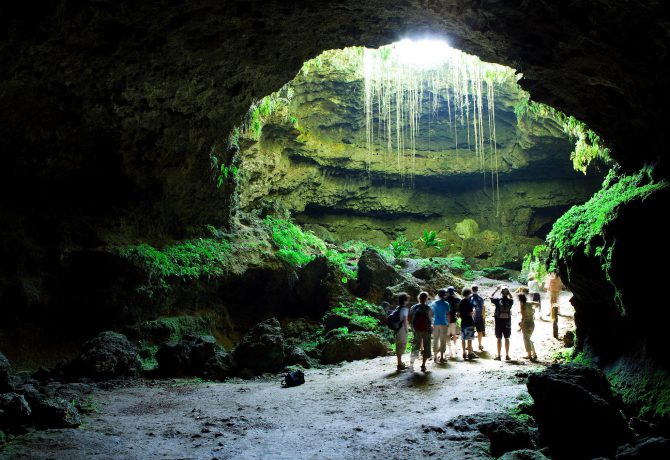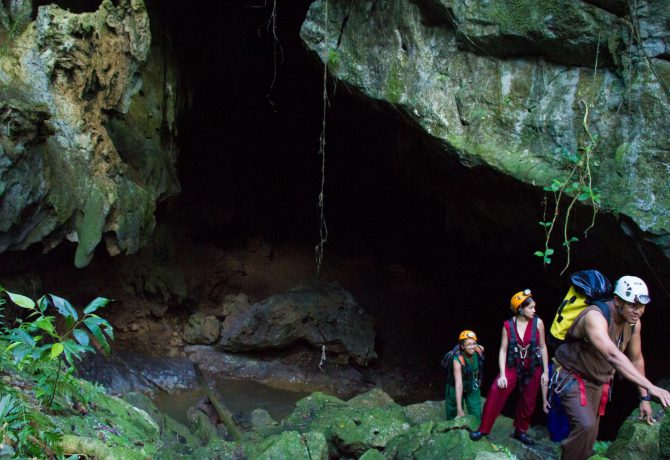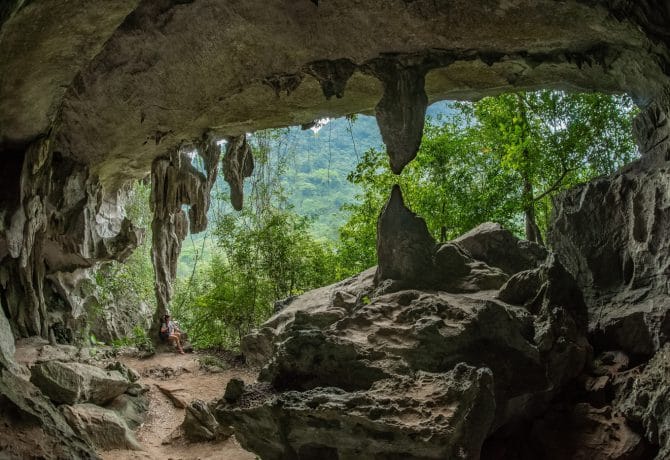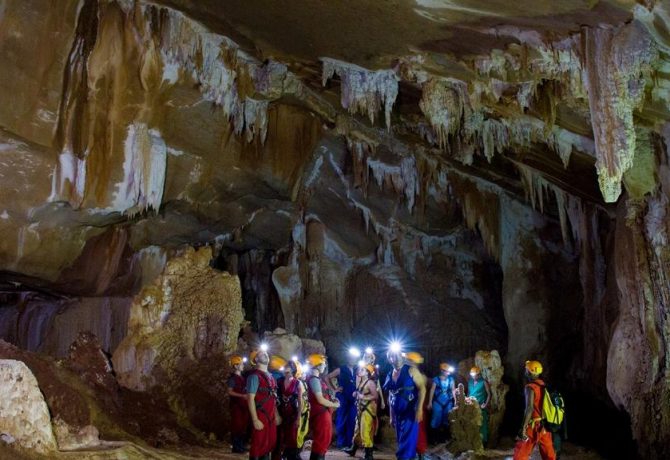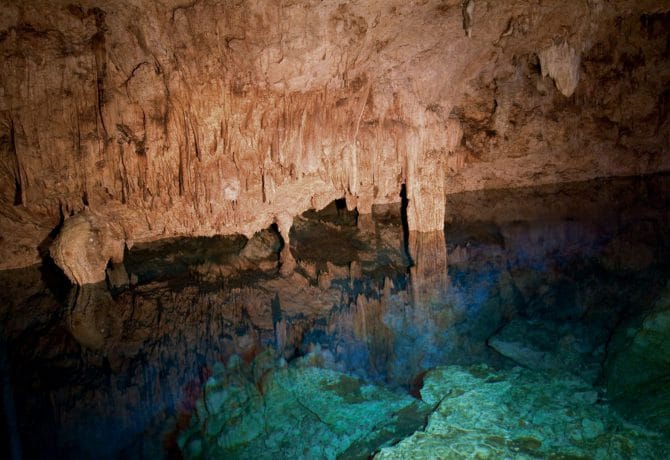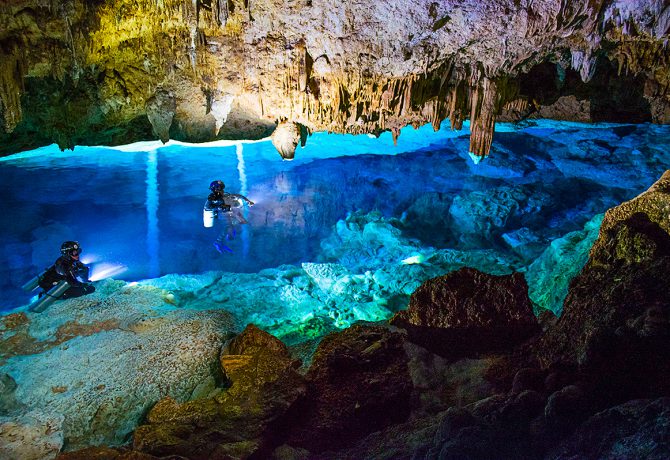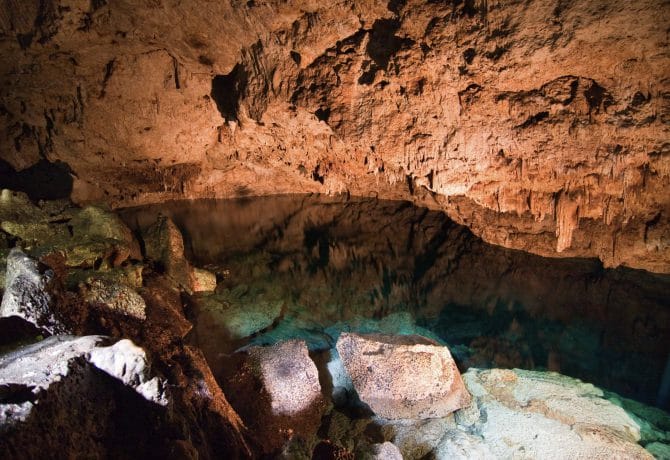50 km from the capital of the Dominican Republic, San Domingo, is the resort town of Juan Dolio. Tourists come here who want to spend their holidays interesting and inexpensive. Local hotels offer an average cost per stay. Some have hostels. On the coast there are many apartments with swimming pools and equipped kitchens.
The central beach with a length of 3.5 km stretches along the main street of the city “Calle Principal”. The sand is always clean, there is no algae, the bottom is hollow. The sea will please both lovers of calm swimming, and surfers waiting for a big wave. A coral reef framing the lagoon protects the area near the shore from strong waves. When entering the water, you can injure your feet with fragments of coral, so you need to stock up on shoes for swimming.
On the territory of the beach, condomium hotels and villas have been built, many restaurants and bars with wine cellars have been opened. Food prices are quite democratic. Souvenir vendors work along the shore. For large purchases, it is best to go to San Domingo or San Pedro. As for the sights, there are plenty of them. The southern coast of the Dominican Republic can be explored in 2-3 days, not in a hurry to get acquainted with the culture and history of the region.
Some Juan Dolio hotels, such as Casa Hemingway or Emotions Beach By Hodelpa- All Inclusive, will help you organize sightseeing tours or rent a car. Our review presents the most interesting objects that can be visited independently or as part of a group.
Los Delfines Water&Entertainment Park
Los Delfines Water & Entertainment Park is the largest water park in the Dominican Republic. It is included in all excursion routes related to visiting entertainment facilities of the country. It covers an area of 44 sq km. on its territory there are 17 water attractions, built in full accordance with European standards. For lovers of surfing and rafting there is a wave pool. Another 8 swimming pools are designed for swimming adults and children.
In addition to water slides, you can play mini golf, arrange races on radio-controlled boats, compete in beach volleyball or paintball, watch a show of dolphins and fur seals, visit an open-air cinema. For a relaxing holiday for adults there are: a spacious lounge with sun loungers for sunbathing, a SPA center “Tai-tai”, a VIP zone.
On the territory there is a minimarket, an Italian restaurant, two fast food bistros, a café “Terrace”, “World of Arcadia”. The water park is open from Wednesday to Sunday from 10:00 to 18:00. An adult ticket costs $ 47, a children’s ticket is two times less. It is convenient to get here both by public transport and on your own. For car owners there is a free parking.
Website: www.losdelfinespark.com
Address: Carretera Guayacanes, Juan Dolio, Dominican Republic
27 waterfalls
Damajagua is a natural attraction consisting of a mountain river with rapids and 27 waterfalls. The routes are designed taking into account the physical fitness of tourists and include a visit to 7, 12 or 27 waterfalls. You will have to walk, overcome some areas by swimming, climb to the top of the mountain along narrow paths, so you should evaluate your own capabilities before you book a tour. By and large, Damajagua is a natural water park. This is a great place for lovers of cliffjumping.
The easiest route to 7 waterfalls (price $ 7.5). But even on it there are age restrictions – children under 8 years old are not allowed to hike. 12 (cost $ 9) and 27 ($ 13) are more complex tours, so only adults participate in them. All necessary equipment, such as helmets, life jackets, are issued at the base. You need to take a swimsuit, comfortable shoes and sportswear with you. There are no food and beverage stalls in the park. Water is usually brought with them. Also, Panamanian sunglasses will not hurt.
The full tour takes 3 hours. Visitors are accepted from 08:00 to 15:00 daily, after 13:00 tickets are not sold. A start camp has been built near the parking lot, where briefings are held and tourist groups are formed. At the reception you can buy an entrance ticket and pay for luggage storage. In a small shop you can buy water and souvenirs for memory. In the café – sit after an exciting hike.
A parking space is provided free of charge. Paid services include: rental of shoes with disposable socks ($ 2), luggage storage for bags, phones, keys, clothes (the cost is set depending on the size of the box – $ 2-8). Jewelry and jewelry are best left in your hotel. Travelers coming by car usually leave their belongings inside the car. They take with them only the most necessary. The camera for photo and video shooting should be waterproof.
Without a guide, they are not allowed on the route. Its services are included in the ticket price. On the basis, groups of 2 to 8 people are formed. The fewer fellow travelers, the more dynamic the journey. You need to take some money with you to tip the conductor at the end of the journey. He is fully responsible for the life and health of tourists, shows how to jump from a cliff into the water, tells interesting stories about the origin of the unique attraction of 27 waterfalls.
Saona Island
Saona Island is the southernmost point of the Dominican Republic. It is part of the National Park del Este and is its sea pearl. From all sides, the island is washed by the waters of the Caribbean Sea. There is no production at all, only local fishing artels go to the open sea every day for the morning catch. The construction of hotel complexes is prohibited on the territory, there are no hotels with restaurants here. You can have a snack in small cafes, where locals treat guests to fish dishes and exotic desserts. Buffets are organized for tourist groups, and catering is available for weddings or corporate parties, and tables are served right on the beach.
The excursion tour includes sightseeing of the following natural attractions: 4 types of mangrove forests, a flooded sandy island, shoals with starfish, caves. In which, according to legends, pirates of the Caribbean hid treasures. Coral reefs are home to moray eels, parrotfish and other species of underwater life. Divers and lovers of underwater filming at any time of the year are provided with ideal conditions for exploring the reefs. Nature itself has provided unique visibility underwater, natural light and a comfortable temperature for immersion.
Most visitors prefer to relax on the beach. The beautiful landscape of Playa de da Canto beach was used to shoot commercials for the Bounty chocolate, and scenes for the film “Pirates of the Caribbean” were filmed on the island itself. Saona is considered one of the most attractive and environmentally friendly holiday destinations in the Dominican Republic.
Catalina Island
A few kilometers from Saona is another piece of paradise – the uninhabited island of Catalina. It is fully adapted for beach holidays and has the status of a national park. Piers have been built on the shore, to which tourists from La Romana are delivered or private pleasure yachts are moored. It is believed that the best conditions for diving and snorkeling in the Dominican Republic are created here. The water is so clean that visibility reaches up to 30 m.
The beach strip is quite long. Therefore, everyone can find a secluded corner for a relaxing holiday or a unique photo shoot. The kingdom of corals is located a few meters from the shore. The slope “Wall of Muro” smoothly goes into a depth of 100 m. The first stage of the dive is at a depth of 25 m, the second – 40 m. Beginners will be advised to start with the wall “Drop Wall” with a depth of 40 m. The first stage of immersion is at around 4 m.
The main attraction of the island is the underwater museum of the pirate Kidd. Its exhibits are placed on the sunken ship “Quedag Merchant” (3 m from the shore, at a depth of 20 m). William Kidd was a cruel and greedy filibuster. While traveling to the dive point, tourists are shown a show with a story about how the pirate lived and how his ship sank. It is said that at that time there were 40 thousand pounds sterling in gold on the ship.
If you go to Catalina as part of an excursion group from La Romana, then the return trip will pass along the Chavón River. An intermediate stop is planned here at the largest tobacco factory in the Dominican Republic. It produces cigars that are popular all over the world.
On the island of Catalina, the construction of hotel infrastructure is prohibited. Only a few border guards live here permanently. Beach attendants and water equipment rentals come here to work from La Romana. They set up sun loungers with umbrellas on the beach, open small bars, bring beer and ingredients for cocktails. There are several beach volleyball courts on site.
Cave of Cueva de las Maravillas
In 1926, not far from Juan Dolio, the unique Yagual Cave was discovered. In 1949, after research, it was renamed Cueva de las Maravillas (Cave of Wonders). It is located at a depth of 25 m and was formed about 100 thousand years ago in sedimentary limestone rocks. 240 square meters out of a total area of 600 square meters are open to visitors. m. In 2003, the cave was equipped for excursions. Along the entire length of the route, wooden paths with handrails are laid, smooth climbs are equipped, and an elevator is installed at the entrance. For creating conditions for people with disabilities, the organizers received a gold medal at the International Architectural Biennale in Miami.
In the Cave of Wonders there are about one and a half thousand cave paintings. They were created by the Taino Indians. Researchers believe that the cave was a place of religious rites. The images were applied 500-1000 years ago. To do this, natural dyes of black and red shades of coalinite and galloiseite were used. The drawings show scenes from the domestic and religious life of the local population of the island.
After the tour, you can visit the iguana nursery, horse yard, souvenir shop, have a snack in a cafe. The cave is open from 09:00 to 18:00 every day except Monday. The ticket price is $6.
Address: Carretera La Romana – San Pedro de Macoris – KM 16, Autovía del Este, República Dominicana
Flower Farm
Not far from the Palace of Wonders is another natural attraction – the Flower Farm. This is a landscaped botanical garden with convenient paths, alleys and benches in the shade of tropical trees. Decorative varieties of flowers are grown here, which are sent from here to all continents of the world. In addition to the working area with greenhouses and open flower beds, visitors will find an unexpected attraction.
Even during the period of improvement of the site, a piece of wild jungle was left here. Landscape designers have turned it into a mysterious labyrinth. The fun is to be sure to get lost and then find your way home. The place is in demand among parents with children. In the labyrinth grows many interesting tropical plants, which can be considered in the process of walking.
Cave Cueva la Iglesia (cueva de la virgen)
The huge cave of Cueva la Iglesia (cueva de la virgen) is located at the foot of the Baoruco mountain range. This is the miraculous sanctuary of the Cave Virgin. According to legend, she wore long black hair and could turn a person into stone with one look of dark bottomless eyes. Locals still believe that her spirit accompanies anyone who dares to approach her home. The cave consists of 2 halls. They are interconnected by a flight of stairs. In the lower part there is an underground lake with the purest turquoise water.
From the starting camp to the cave it takes about half an hour. The trail passes through the rainforest, in which 7 unique species of fern grow. On all trees, including fruit trees, there are signs with the name of the plant and a list of its useful properties. The forest is home to 40 species of birds, you can hear the singing of palm coins and admire the miniature hummingbirds.
Altos de Chavón Artists’ Village
On the Chavon River, not only the famous cigar factory was built. In the mountains high above it is one of the most creative sights of the Dominican Republic – the village of artists Altos de Chavón. It is built in the traditions of Spanish folk architecture. In 1972, millionaire Charles George Bluhdorn decided to make a gift for his beloved daughter Dominika. He ordered the construction of a medieval European town on the island of the New World to begin. He wanted a slice of Europe to always be with him and his family.
In 1992, the artists’ village was opened to the public. Here, each object represents a fine example of European architecture. One of the main objects was the amphitheater, created in the traditions of Ancient Greece. It is able to accommodate 5 thousand spectators. It regularly hosts concerts of popular artists, show programs, thematic performances. Frank Sinatra, who invested his own funds in the construction of the facility, Shakira, Julio Iglesias and other world stars performed here.
In the center of the village there is a church of St. Stanislaus. It’s valid. On Saturdays and Sundays, Masses are held here, and you can visit the temple during the day. The official wedding ceremony of Michael Jackson and Lisa Marie Presley was held here. It lasted only 15 minutes and was held in secret from everyone. In 2004, Louis Alphonse and Marie Margaret de Vargas (Duke and Duchess of Anjou) were married here.
Just behind the church is the Archaeological Museum. Its fund contains tools of ancient Indians, weapons, artifacts found during excavations. The exposition is compiled in accordance with the chronology from the moment of the appearance of the first people on the island and until the era of colonization. The museum is open free of charge and receives visitors from 09:00 to 20:00 daily, except Monday.
The Parsons Design School has been opened in Altos de Chavón. This is a branch of the New York Design School, where you can continue your studies after studying in the Dominican Republic. Behind the aged facades of the institution’s solid building are well-equipped classrooms and auditoriums. It trains specialists in the field of graphic design and Digital Design, fashion designers and masters of fine arts. Their work is on display in four galleries. Each of the graduates is obliged to leave one of his works in the school fund.
Artists’ studios are open to the public. Tourists can freely enter any class, as well as take part in master classes on the manufacture of jewelry, macrame and batik. For travelers who want to master the craft in more detail, a week-long course is offered. For the duration of the training, a place is provided in the apartments, equipped with a bathroom and kitchen. The student can use drawing tables and the entire infrastructure of the campus.
The beautiful views of Altos de Chavón attract more than just artists. Scenes for the films “King Kong” (remake), “Rimbaud-2” and “Apocalypse Now” were shot here.
Website: http://www.casadecampo.com.do/altos-de-chavon/
Fan-Fan Cave (cueva fun fun)
Fan Fan is one of the largest stalactite caves in the Dominican Republic. It is located in the Los Aitises National Park. Once upon a time, the first people lived in the cave. Researchers found the remains of bonfires, ritual idols and cave paintings. Many kilometers of tunnels, halls and passages are not landscaped, which gives the sights an additional charm. There is no artificial lighting, no paths laid, no ascents and descents.
The cave is located at a depth of 18 m. most of it is covered with water, so lovers of overcoming underground passages by swimming rush here. On the launch pad of the ranch “Capote” small groups of tourists are formed, who go on an excursion only accompanied by a guide. Equipment – digger helmets with flashlights, life jackets, overalls, safety cables are issued at the entrance. You can get into the cave only by going down the rope.
The cave is inhabited by bats. The rustle of their wings and the squeak can be heard from all corners. Along the way, you can meet other inhabitants, in particular, crabs and spiders. Inside is a huge number of bizarre figures made of stalactites and stalagmites. They unite in arches, create a semblance of images of animals, portals, fabulous creatures. The road to the cave and back is overcome on horseback. The path will pass through the jungle with magnificent tropical plants.
Cave Cueva de Chicho
The cave of Cueva de Chicho is another natural attraction, which is very difficult to reach. The entrance to it is flooded with water. Tourists will swim through underground reservoirs, which are of particular beauty. The water temperature does not fall below 250C. In the cave there are three large halls with stalactites and stalagmites. The first is located at a depth of 9 m. Spaces are interconnected by tunnels with “air pockets”. The second hall was called “Throne”. In shape, it resembles the throne of the ruler of a medieval kingdom. An underwater journey of 120 m can be difficult for people who do not have the skills to dive into cave reservoirs. An experienced instructor will accompany the group, but it is recommended to practice in other, less challenging caves first.
You can make a trip to the sights of Juan Dolio on a rented transport, motor-rickshaw or book an individual tour with a transfer. Hotels offer resort sightseeing services at an additional cost.

